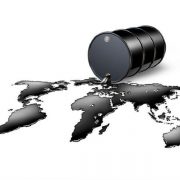Will OPEC make it to co-exist with U.S. shale oil ?
At the beginning , they ignored each other.  After a while, they went into a bruising fight. Now, finally, they are talking, although with opposing agendas.
After a while, they went into a bruising fight. Now, finally, they are talking, although with opposing agendas.
The evolution of the relationship between OPEC and the United States oil industry now lasts for about 5 years. 5 years ago, OPEC discovered it has a rival emerging in a core Oil market.
Officials of the U.S. shale bankers were present this week in Vienna, when OPEC held a meeting.  After what happened, OPEC is preparing a trip for its officials. Aiming to visit Texas in order to check if it is possible for two industries to co-exist. Because if some new co-existing spirit is suffocated, the major future fights are near.
After what happened, OPEC is preparing a trip for its officials. Aiming to visit Texas in order to check if it is possible for two industries to co-exist. Because if some new co-existing spirit is suffocated, the major future fights are near.
“We have to coexist,” said Khalid al-Falih,
Output Cuts
OPEC now realizes that agreed supply cuts and higher prices only make it easier for the U.S. shale industry to deliver higher profit. While it is aware that shale industry has found ways of slashing costs. It happened three years ago, when Saudi Arabia ”turned up the taps”.
Permian Basin – the largest U.S. oilfield. Parsley Energy Inc, Diamondback Energy Inc, and others are pumping at the highest rate in years. Now taking advantage of new technology, low costs and steady oil prices to harvest profits at OPEC’s cost.
OPEC’s latest idea is to make certain co-agreements, and hold the prices below $60 per barrel. Meanwhile it is aware of the U.S. shale power, but aims to hinder its growth.
“All shale companies in the U.S. are small companies.” (Noureddine Boutarfa)
“The reality is that at $50 to $60 a barrel, (the U.S. oil industry) can’t break beyond 10 million barrels per day.”
“For all OPEC members, $55 (per barrel) and a maximum of $60 is the goal at this stage.” said Iran’s oil minister.
“So is that price level not high enough to encourage too much shale? It seems it is good for both.”
“We had a discussion on (shale) and how much that has an impact,” said Ecuador Oil Minister Carlos Pérez.
“But we have no control over what the U.S. does and it’s up to them to decide to continue or not.”
OPEC delegates asked Mark Papa, chief executive of Permian oil, to say more about the shale’s potential. He diplomatically did not open the cards.
“In terms of the threat, we still don’t know how much (U.S. shale) will be producing in the near future.” Nelson Martinez, Venezuela’s oil minister said after the talk. (Reuters)
Opinions On Shale
UAE Energy Minister Suhail bin Mohammed al-Mazroui, admittedhe didn’t believe U.S. oil production would rise by 1 million bpd next year.
Some of OPEC’s customers are indeed content to see an alternative for their Oil sources. For example India, the world’s third-largest oil consumer, currently said it is looking to the United States for greater supply.
“The new normal has to be accepted.” Dharmendra Pradhan, India’s energy minister said this week at the OPEC meeting.
OPEC will meet again in November. Aiming to reconsider output policy and check if everything was going as planned. While most in the group now seem to believe that shale has to be accommodated, there are still those in OPEC who think another fight is close.












Leave a Reply
Want to join the discussion?Feel free to contribute!